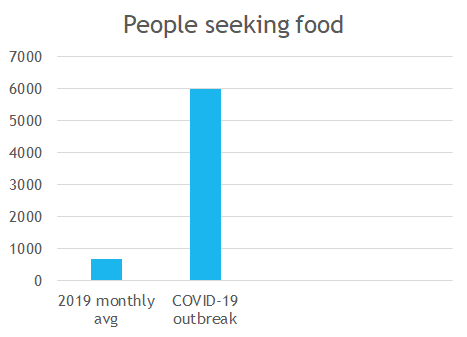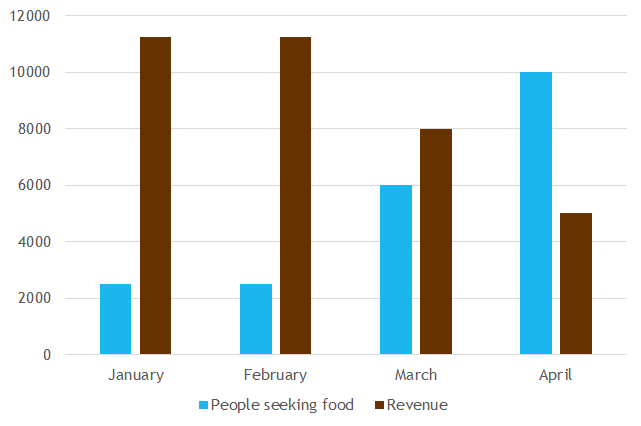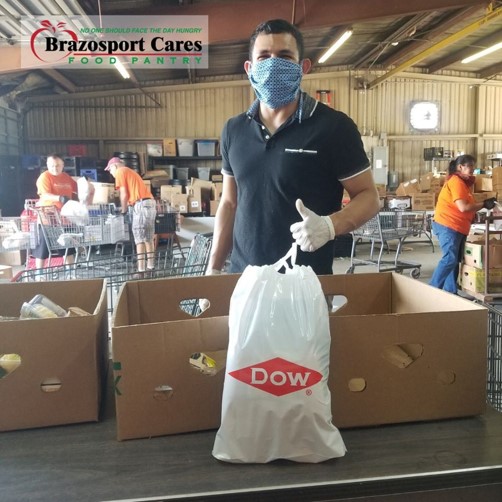The COVID-19 crisis has probably wrecked your fundraising plan and maybe your budget, too, forcing you to find a virtual fundraiser that will work for your nonprofit.
You’ve probably postponed or cancelled events and you’re wondering how to survive without them.
You may feel torn about asking for donations because even though your nonprofit is struggling to pay bills, you also know that many people have lost their jobs and simply can’t give right now.
You’re stuck in neutral, not knowing WHAT to do next, yet knowing you need to figure it out soon!
I get it.
You need a short-term response to get you through the next few months and a longer-term plan to deal with changes over the next year or so as we all adjust to a new normal.
You need to create a compelling yet sensitive appeal for donations that motivates people to give without making you feel sleazy or uncaring in any way.
And you need the confidence to move forward even in the face of overwhelming uncertainty.
 You with me so far?
You with me so far?
I’ve got a formula for a virtual fundraiser that’s working right now for other nonprofits and I want to share it with you
It focuses on the short-term because this is where you need help NOW.
The truth is that even though everything seems upside down, you CAN run a successful fundraising campaign during this time.
It’s time to RISE to the challenge, get scrappy, and find a way to host a virtual fundraiser that will keep revenue coming in to fund critical operations.
Introducing the RISE Virtual Fundraiser
The RISE virtual fundraiser gives people an update about the work you’re doing (or preparing for), connects (or reconnects) with them emotionally, meets their curious need for information, and asks for their support.
It’s basically a trail of authentic, connecting communications that builds up to an Ask without feeling pushy or heavy-handed to either you or your donors.
If you’ve been communicating regularly and consistently since well before the crisis, you can easily get through this system’s four steps in 7 days or so.
However, if you’ve been quiet and not communicating with your supporters much, you may need to spread it out to 14 or 21 days so it feels more like an organic conversation.
Here are the 4 basic steps in the RISE virtual fundraiser:
- Reach Out
- Insight
- Show & Tell
- Encourage
Let’s have a closer look at each step.
Basis for the RISE method
 The RISE method is rooted in donor-based fundraising which focuses on relationships.
The RISE method is rooted in donor-based fundraising which focuses on relationships.
When people feel like a valued partner and believe that they are more than just a number in your database, they give.
That means you need to see your donors as more than just a checkbook, especially right now.
Having a big, loyal donor base sets you up for success both now and into the future, so it makes sense to spend time cultivating those all-important relationships.
Believe it or not, there are nonprofits that are doing just fine right now, largely because they treat their donors as friends, not revenue sources.
In short, they value the relationship over the donation.
Now, relationships are based on two-way communication and concern.
You have to care about how the crisis is impacting your donors instead of focusing only on your finances.
So, ask your donors how they’re doing and mean it.
Offering empathy is a way you can GIVE your donor something and make them feel valued for more than just their money.
Showing empathy by asking genuine questions, paying attention to the answers, and being present in the conversation all go a really long way in making lasting and sincere connections.
And it will build really strong relationships for both now and into the future.
Focusing on authentic, heartfelt communications will keep you from over asking donors and that’s key to successful fundraising.
Step 1. Reach Out
People know that this crisis is impacting everyone, including nonprofits.
And they’re curious.
After all, they’ve probably heard from all their favorite stores. But not their favorite nonprofits.
So, start your RISE virtual fundraiser with a “fireside chat”.
 Franklin Roosevelt started fireside chats in 1933 to help people stay calm during the financial crisis of the Great Depression. He used these evening talks to quell rumors, explain policies, and reassure people that things would be okay.
Franklin Roosevelt started fireside chats in 1933 to help people stay calm during the financial crisis of the Great Depression. He used these evening talks to quell rumors, explain policies, and reassure people that things would be okay.
He was a steady voice in a time of uncertainty, and that’s what you need to be now for your donors.
Your fireside chat is a video that gives supporters an overview of how the crisis is impacting your programs and those you serve.
It should be a heartfelt message with the goal of educating, connecting, and showing the human side of your organization.
If you can take your supporters emotionally to the front lines of your nonprofit’s work, you can help them understand the situation and motivate them to help.
That means helping them feel the magnitude of the impact on those you serve.
It’s probably best if your fireside chat video is recorded instead of live so you can edit if needed. Share your video with donors through email, on social media, and on your website or blog.
Here are some tips for creating your fireside chat video:
- Your fireside chat MUST come from the Executive Director/Leader/Face of the organization.
- Make it a heartfelt message that’s confident, reassuring, and honest.
- Keep your video 5-7 minutes long. Less is more.
- Depending on your comfort level, either script out what you want to say or make yourself some note cards so you can keep the video flowing and hit all your points. This is NO time to stumble over your words!
- This video is purely for ENGAGEMENT so do NOT ask for a donation. Think of this as a “state of the organization” address. Your job is to share what’s happening behind the scenes, what you are doing (or preparing to do), how those you serve are being impacted, and what your short-term focus is. You are simply informing and checking in. DO NOT ask for anything except ideas and feedback.
- It bears repeating: Be clear about how the crisis is hurting those you serve.
- Share your personal passion for the mission and those you serve.
If you aren’t experienced or comfortable being in front of the camera, practice what you want to say a couple of times. Then record one so you can watch yourself to see if there’s anything you need to change like odd body language, strange facial expressions, or distracting wardrobe or background. You may notice that you have a weird sniffle, repetitive hand gesture, or use a lot of filler words that you want to make a mental note to stop doing so they don’t distract your viewer.
 In your fireside chat, be sure to:
In your fireside chat, be sure to:
- Remind viewers of your mission (they may not remember).
- Explain how the crisis is impacting those you serve and the organization’s ability to provide services.
- Share your plans, even if they’re not fully baked. It’s okay to say “We’re considering…” or “We think we’ll have to change our service delivery, but we aren’t exactly sure yet.” Incomplete plans let the viewer know you’re working on it and can actually seem more genuine (because really, no one has anything figured out right now!).
- Provide reassurance that you’re not planning to go anywhere but are looking for ways to adapt and keep moving forward.
- Invite questions, comments, or concerns. Remember that communication is a 2-way street and it’s important to offer a way for people to easily respond to you with whatever is on their mind.
When done well, your fireside chat video will answer questions the donor has but hasn’t yet voiced and leave them feeling “in the know” about what’s happening with your nonprofit. They’ll feel good about your nonprofit and eagerly look forward to hearing from you again.
Step 2. Insight
After you’ve sent or posted your fireside chat video on social media, wait a few days and send an email sharing more detail about how the crisis is impacting those you serve.
The point here is to provide some context for the problem and insight into its magnitude.
If possible, create an infographic or chart showing the increased or decreased need or projected need for service.
For example, if you work with a food pantry, you can create a simple infographic or chart to show the increased need in people seeking emergency food boxes now and how that compares to your average month last year. Show the increase in resources you’ll need to provide those additional food boxes (more money to acquire food, more food drives, more boxes, extra volunteers, etc.) and how that increased expense was not in your budget.
Even something like this simple bar chart shows the dramatic increase in requests for emergency food during the outbreak versus the average month last year.

This one shows the increase in need with a subsequent decrease in funding.

You might share how you believe this increase will not go away for quite some time and that your nonprofit needs to be ready to meet that need as long as it exists.
See how that provides a deeper understanding of the problem?
If you work with animals, talk about the increase in intake you expect when quarantine is lifted and how you need to be ready for those animals. The number of strays doesn’t go down just because you’re closed to intake!
If your nonprofit is a community service organization (arts, etc.), remind people of the work you do in the community, how it makes the community a better place, and how you need to be ready to hit the ground running once the crisis has passed.
Include some basic information in this email:
- Talk about how lives are being impacted and why that matters.
- Show a clear increase in need for your services.
- Don’t ask for donations. Again, this is JUST an informational email to keep your supporters involved and in the loop.
Your Insight message should make people say “Wow, this is bad. I didn’t realize just how bad it is.”
Step 3. Show and Tell
If a picture is worth 1,000 words, then a video is worth a million!
That’s right, it’s time to do another video!
 Except this time, you’re going to show your supporters what happens in your nonprofit on a daily basis.
Except this time, you’re going to show your supporters what happens in your nonprofit on a daily basis.
If you have a facility, you can shoot and share a virtual tour.
If you don’t have a facility, you’ll need to get creative and walk people through a day in the life of those you serve or what would happen if your nonprofit didn’t exist.
You’re going to show, as visually as you can, why your work matters and what’s happening (or not happening) right now.
The point here is to give supporters the feeling of having a private tour or a private talk with you to hear all about how your nonprofit is changing lives.
Get down and dirty and take them along with you to see what your days consist of, the impact you’ve had in the past, and what you’re planning for the future.
If possible, show them your team at work making a difference in the world.
In your Show & Tell, be sure to:
- Talk about what’s happening (or not happening) in your facility right now because of the crisis. “Normally, our shelter would be full of dogs barking and begging for attention, but you can see all our kennels are empty…”
- Share what you’re doing right now or preparing for that you need help with.
- Talk about why receiving support right now is crucial. Say either “They’re depending on us and we need to be here” or “We need to be ready when things open back up.”
- ASK for support. NOW is the time to nail your Ask for WHAT YOU NEED. Tell your viewers that you need help to RISE to the needs of those you serve.
Tips for your Ask:
- Ask for an amount that helps people understand exactly what their money will pay for. Your Core Number can help explain what it costs to provide a unit of service.
- Offer a low-end amount in your ask. $20 or lower is an easy “yes.”
- Be very specific about why their help is needed now.
- You can ask for operating funds, funds for supplies or materials, or funds that will go directly towards direct service.
- Don’t ask for capital funds, rainy-day funds, or money to replenish funds already spent.
- Don’t use any “emotional blackmail”; don’t tell people that something bad will happen if they don’t give like “We will have to close our doors if we don’t raise $10,000 today.”
Be sure to tell people how to give in your Ask. Give them a link to an online donation page or where to send a check.
Step 4. Encourage
 The last step in the RISE method is one of the most important ones: an encouraging follow-up.
The last step in the RISE method is one of the most important ones: an encouraging follow-up.
Wrap up all your previous communication efforts into a nicely worded email that summarizes your message throughout the previous three steps and reminds people where to give.
Even if people were incredibly moved, they may have gotten distracted and forgot to donate. Your email can be the reminder they need to give.
In your email, include a link to the recordings from both the fireside chat and the Show & Tell videos so people can rewatch if they want. And obviously, since this is an Ask, include a link to give.
A connecting, authentic email like this isn’t the easiest thing to write, so don’t worry if you have to write it a couple of times or edit it more than you might edit another email.
The important thing is to keep it as short as possible and conversational in tone.
Ready, Set, Go
It’s TIME to RISE! You ready?
YOU deserve some encouragement, too. Here are some little take-aways for you to keep in mind.
- Fundraising during a pandemic is NOT about you. Stay focused on those you serve and how they’re impacted so you don’t come across as begging or inauthentic.
- Don’t assume that everyone is suffering and no one will give. On the contrary, there are plenty of people out there who have simply been inconvenienced by the situation. Plenty of people still have discretionary income and will be HAPPY to support nonprofits they care about. So, don’t talk yourself out of asking for support.
- It’s okay to be afraid. None of us have ever been through anything like this before and we’re all figuring it out as we go. It’s okay to feel fear, just don’t let it control your thoughts or actions.

The Bottom Line
You CAN raise money for your nonprofit during this pandemic.
Focus on connecting with your donors in an authentic way, taking them emotionally and visually to the front lines of your work, and help them see how their donation will make a difference.
They’ll give.


![Build a Nonprofit Website that Works [Steal These Ideas!]](https://getfullyfunded.com/wp-content/uploads/2012/09/AdobeStock_260038257-scaled-500x383.jpeg)



[…] Sandy Rees tells you to RISE to the Challenge: a Powerful Virtual Fundraiser to Raise Money NOW. […]
I just opening a nonprofit and I will need all the help I can get
You’re in the right place! Did you download our free ebook called “Fund Your Dream” yet? It will get you started! https://getfullyfunded.com/getstarted